How time flies. It seems only a few months since the 2016 General Assembly of the Grand Prix Drivers Club in Maranello but here we were in Riccione for the 2107 Assembly. As it customary it mixed a lot of fun and Club business including the re-election of the Club officials. (See separate story).
Our host on this occasion was an old friend of the Club Gabriele Fabbri , owner of the Hotel Promenade in Riccione on the Adriatic Coast. Gabriele is not only a former Italian racing driver but is founder and President of the Adriatic Veteran Car Club.
There was a good turnout of members but sadly David Piper, Richard Attwood and Mike Wilds were delayed and missed the first event on the programme which was a visit to Scuderia Toro Rosso in Faenza. This proved to be the highlight of the whole weekend as Franz Tost, the Team Principal surprised everyone by announcing that during our visit we could take a closer look at all the departments and take photographs, which is relatively unprecedented in this day and age where mobile phones and cameras are regularly taken away from visitors.
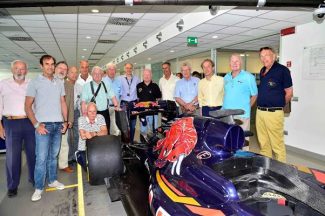
Tost firstly gave a background to the formation of Toro Rosso and it was clear that there is friendly rivalry between Toro Rosso and sister company Red Bull Racing. Throughout the visit one had to remember that Toro Rosso is often classed as one of the smaller teams in Formula 1 when in fact they employ 400 people during the racing season and over 500 during Winter when developing the cars.
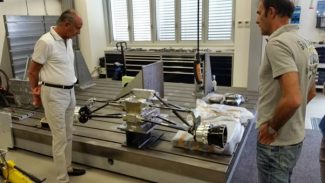
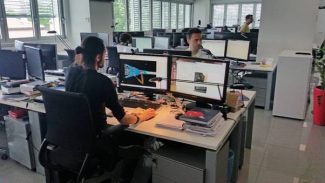
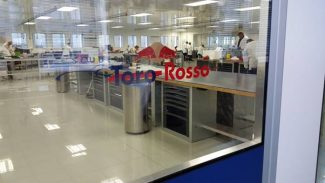
The entire factory would put many hospitals to shame with white tiled floors and spotless work stations. The design office is vast with 150 people working in separate open plan sections covering aerodynamics, chassis and logistics. Then there was the operations room which is the true nerve centre of the company during grand prix races. There are two rows of ten stations each with three computer screens, panels of switches and plugs. In front of them is a complete wall of television screens. At each grand prix this room is filled with engineers and specialists who are monitoring everything that happens at the track. As Tost explained, with a laugh, the race team at any of the the circuits around the world are actually being directed by our engineering team here in Faenza.
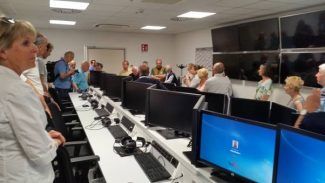
In the race preparation shop there were spaces as the Toro Rosso’s for the Canadian Grand Prix had already set off for Canada and this weekend’s Canadian Grand prix. Elsewhere other engineers were working on new cars and components. In one area an engineer was delicately wiring up the electrics of a steering wheel and in another four autoclaves were waiting to be loaded and half a dozen fluted and winged nose cones were being gathered together.
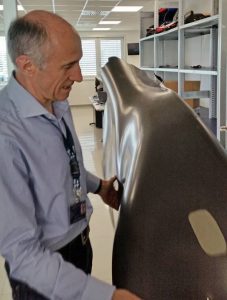
At the end of the visit everyone appreciated the fact that Franz Tost spent some four hours with the members just a few days short of flying to Canada for the Grand Prix and described in detail all the various departments with humour and insight. A truly memorable occasion.
That evening we were joined by Giancarlo Minardi, an Honorary member of the Club at a dinner given by the local Rotary Club of Misano Adriatico at the Vecchio Mullino restaurant.
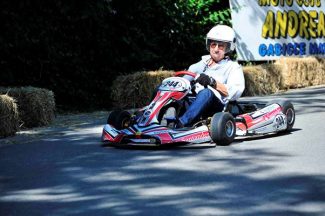
On the second day it was time to relax and once more Gabriele Fabri had arranged something special. We were driven to Gabbice Monte where a one kilometre stretch of road from the hill above the seaside town had been closed specially. An invitation had been sent out to members of the local soap box racing “ Scuderia Ferrari Cub Soap Box”. Who turned up with a variety of cars that looked nothing like the simple soap boxes that we used forty or fifty years ago. There were modified karts with the engines removed, three wheel tricycles , specially built hot rods and even a low slung two-seater built and run by a local enthusiast who controlled the rear brakes with two handles whilst his 11 year old son did the driving !
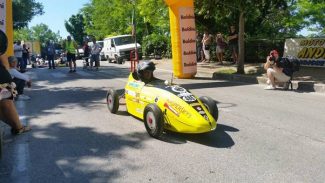
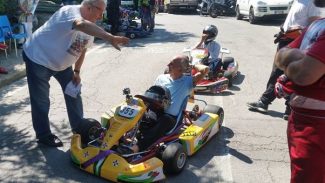
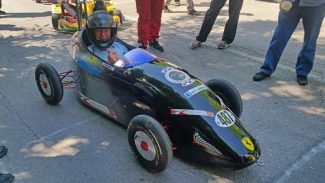
The course had a series of sweeping bends and a tight left hand hairpin with the soap boxes hitting speeds of over 50 kph. Needless to say a number of members leaped at the chance to run. The general opinion was that if you had a lot of weight you would be quicker but this proved not to be the case as the winner of the event was wiry vice-President and five-time Le Mans winner Emanuele Pirro with honorary member and former BMW Grand Prix principal Mario Theissen second and lightweight former Williams driver Jo Vonlanthen third. Everyone had three different runs and it was amusing to listen to the grand prix drivers comparing notes as to how they should approach each run: just like the old days.
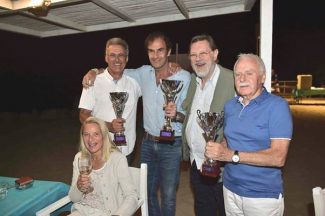
Saturday was a rest day followed by the Annual Assembly where the business of the day was conducted including the election of club officials and the development of the club with emphasis on recruiting new members. This was followed by the Maserati Gala Dinner at the Eden Rock restaurant hosted by Maserati.
On the Sunday there was a relaxing visit to Gabicce Monte where a number of local racing enthusiasts brought along their racing cars. Needless to say an impromptu hill climb was set up and the surprise was that the quickest time was set up by the oldest car in the display, a stunningly original 6C 1750cc Alfa Romeo grand prix car that had been raced in the 1929 Monaco grand prix by Goffredo Zehender.
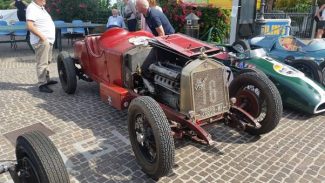
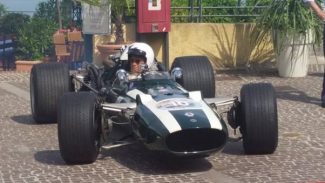
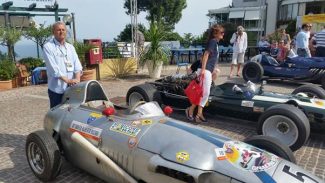
For the British members two cars stood out. One was the Cooper-BRM V12 that had been raced briefly in Formula 1 but was later used by British hill climb driver Martin Brain and an immaculate Cooper-Bristol that had been raced in the early 1950s by John Barber.The latter car is now owned by Giorgio Marchi who is bringing the car to the Silverstone Classic in July. There was also an interesting collection of Italian racing cars including a true one-off, a Zagato bodied monoposto aimed at grand prix racing but utilising a straight eight engine made up of two Fiat four cylinder engines mounted nose to tail. Then there was a Taraschi Formula Junior car. Keeping an eye on the car was Tazio Taraschi, son of the founder of Tartaschi who explained that he and his father ran the only racing car company that changed its name three times. Originally they built their cars as Uranias, then changed to Giaur and finally to their own name Taraschi.
That evening there was a drive to Brisighella the home town of the late Lorenzo Bandini for a ceremony where the Bandini Memorial Trophy was presented to Scuderia Ferrari by Lorenzo’s widow Margherita, followed by dinner in the La Grotta restaurant which is actually built around an ancient grotto.
One of the main elements of the Grand Prix Drivers Club is the opportunity for grand prix drivers of various periods to get together and not only talk of the past but analyse the present state of grand prix racing. It is always a memorable occasion and this year the most memorable element was the visit to Toro Rosso. For some of the members the contrast between grand prix racing in their day and modern Formula 1 was laid bare and stunningly impressive.
